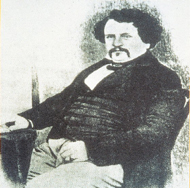History
Cement is a hydraulic binder and the basic ingredient of concretes and mortars. It acts as a kind of glue to stick sand and gravel together.
Cement has evolved over the decades. With Lafarge, it has become a technological product.
In the beginning |
|
|
A mixture of lime, clay, sand and water was used in very ancient constructions. The Egyptians were already using it 2,600 years ago. Around the 1st century, the Romans perfected this "binder". On adding volcanic soil from the region of Pozzuoli, near Naples, they discovered that they could get this mixture to "set" underwater. We now know that the soil from Pozzuoli - which lends its name to pozzolan - is 60 to 90% clay and 10 to 40% lime, depending on the source. Archaeological vestiges from that time, such as cement drains, have been discovered in several Roman cities.
|

Holborough Works (Credits:Lafarge Cement) HydraulicityHydraulicity is the extent to which a material hardens in the presence of water. |
1817: rebirth |
|
|
In 1817, the young engineer Louis Vicat was working on the hydraulic properties of a "lime-volcanic ash" mixture. Louis Vicat was the first to determine in a precise, controlled and reproducible manner the proportions of limestone and silica needed to obtain a mixture which, after burning at a specific temperature and after grinding, produced a hydraulic binder for industrial applications. In other words, cement. However, he published the results of his research without filing for a patent... |

Burham Works, Kent (Credits: Lafarge |
The 19th century: industrialization |
|
|
Scotsman Joseph Asdin refined the cement composition developed by Louis Vicat and, in 1824, filed a patent for a slower setting cement. He called it Portland, because it bore a resemblance to a type of rock found in the region of Portland in southern England. The first cement plant in France was built in 1846 at Boulogne‑ sur‑Mer. In 1868, Lafarge began producing cement at Teil, in the Ardèche. The use of cement soared with the advent of new, faster processes for cement manufacture. |

William Aspdin (Credits: Lafarge Cement ) |
20th century: innovations by Lafarge |
|
|
Lafarge was responsible for 2 important discoveries that marked the early 20th century:
Today, Lafarge's research and development continues to focus on innovation and works to continually improve the properties of cement. |
|





